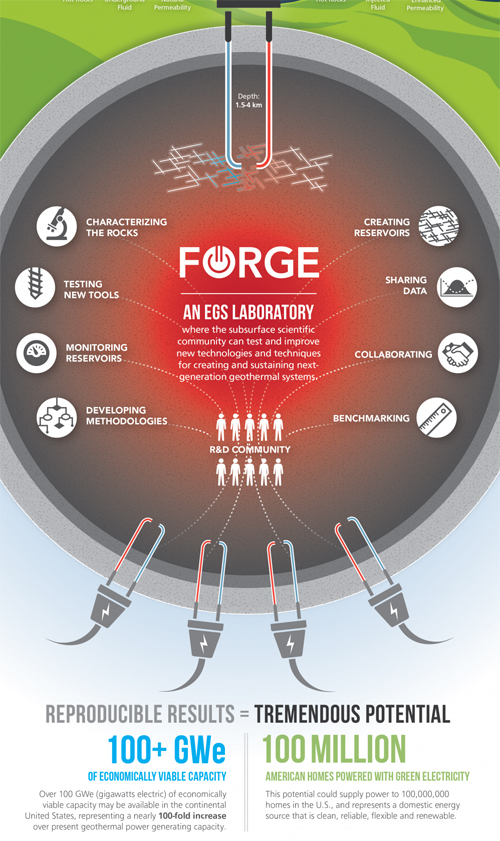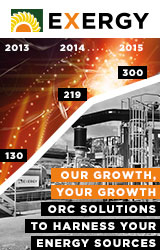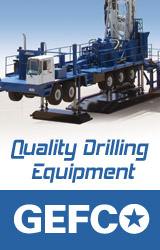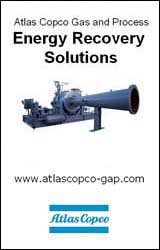Advancing Geothermal Energy: The development of enhanced geothermal systems
 Geothermal energy is, perhaps, one of the most reliable renewable power sources, offering 24/7-baseload power that’s sustainable and cost-competitive in compatible regions. It can also provide distributed power generation from small, co-production projects, with one of the smallest environmental footprints of any technology currently available.
Geothermal energy is, perhaps, one of the most reliable renewable power sources, offering 24/7-baseload power that’s sustainable and cost-competitive in compatible regions. It can also provide distributed power generation from small, co-production projects, with one of the smallest environmental footprints of any technology currently available.
Despite these facts, geothermal energy supplies less than 10% of the world’s energy. In the United States, it accounts for barely one percent of the country’s total energy capacity. And though geothermal energy now provides 2,856 megawatts (MW) of operating generation in the US—up from 2,751 MW operating in September of last year—planned capacity has dropped to 3,333 MW from 4,419 MW, according to development analysis from SNL Energy*.
“It is still unclear how geothermal development will fare down the road,” stated an October 2014 release from SNL Energy. “So far, no new geothermal capacity has been added since the end of 2013. However, recent federal funding for programs aimed at developing enhanced geothermal systems, or EGS, may help geothermal play a more important role in renewable energy generation. The technology also remains eligible for a 10% investment tax credit.”
Understanding EGS
From shallow ground to miles deep beneath the earth’s surface, potential resources for geothermal energy are widespread. Commercially and residentially, heat pumps can tap into most shallow ground, or the upper 10 feet or so of the earth’s surface, to provide reliable heating and cooling to buildings.
On a larger scale, full and deep underground reservoir wells can be drilled to generate electricity. Some geothermal power plants use the steam from a reservoir to power a turbine/generator, while others use the hot water to boil a working fluid that vaporizes and then turns a turbine. However, this requires an ideal setting, with naturally occurring water, rocks, and heat sources. In the United States, most geothermal reservoirs of hot water are located in the western states, Alaska, and Hawaii.
Until fairly recently, geothermal energy systems have relied only on these natural settings, which offer sufficient, permeable resources to allow for energy extraction. Enter: EGS, an innovative solution that provides for the generation of geothermal electricity without the need for natural, convective hydrothermal resources.
According to the US Department of Energy, EGS are engineered reservoirs, which are created to produce energy from geothermal resources that are otherwise not economical due to lack of water and/or permeability. EGS technologies enhance and/or create geothermal resources in this hot dry rock (HDR) through hydraulic stimulation. Under carefully controlled conditions, fluid is injected into the earth’s subsurface, which re-opens pre-existing fractures, thereby creating permeability and fluid saturation. Combined, the permeability and fluid saturation, along with hot rocks, provides for the production of electricity.
“Once completed, EGS function just as natural geothermal systems do: fluids circulating through the hot rock carry energy to the surface through wells, driving turbines and generating electricity,” as per the DOE (http://energy.gov/eere/geothermal).
The DOE predicts that EGS could economically provide up to 100-plus gigawatts of electrical capacity (GWe) in the US: “This potential could supply green electricity to over 100,000,000 American homes, and represents a domestic energy source that is clean, reliable, flexible, and renewable.”
Getting there
Enhanced geothermal systems have spurred some serious interest. In August of this year, the Energy Department announced $18 million of funding for innovative projects to advance geothermal energy, including integrated EGS research and development (R&D). It was stated that the project teams will focus on laboratory feasibility studies, so as to characterize critical EGS reservoir parameters (such as fracture length, fluid flow pathways, etc.) to best engineer successful geothermal reservoirs.
Moreover, beginning in 2015, the Frontier Observatory for Research in Geothermal Energy (FORGE) will fund site characterization and selection of a dedicated field laboratory that specifically focuses on research in enhanced geothermal systems (EGS).
The FORGE initiative is comprised of three phases. The first two phases focus on selecting the site and the operations’ team, while Phase 3 will fund the implementation of FORGE at a single site. It will be guided by a collaborative research strategy, “…executed via annual research and development solicitations designed to improve, optimize, and drive down the costs of deploying EGS.” (Read more at http://energy.gov/eere/forge/forge-home)
So, even though the future of traditional geothermal energy may be uncertain at the moment, it seems the development of enhanced geothermal systems might offer more promise. On the bright side, SNL Energy’s analysis maintains that there are more geothermal projects in advanced development stages now than there were a year ago—and that includes the 120 MW Newberry Demonstration EGS plant in Deschutes County, Oregon.
Owned by Davenport Newberry and AltaRock, the purpose of this project is to utilize new technology, techniques, and advanced monitoring protocols to test the feasibility and viability of EGS for renewable energy production. (Visit http://altarockenergy.com/#&panel1-3)
Based on information on the Newberry EGS Demonstration Blog, stimulation of the Newberry EGS Demonstration injection well began on September 23rd of this year, and they’ve successfully injected approximately 3,000,000 gallons of water into the expanding EGS reservoir. (Learn more at http://blog.newberrygeothermal.com).
EGS systems are currently being developed and tested on a global basis as well, including in places in Europe, Japan, and Australia. In fact, Australia offers the largest EGS project in the world to date—a 25 MW demonstration plant in Cooper Basin. It has the potential to generate between 5,000 MW and 10,000 MW.
Though a man-made creation, EGS emits little to no greenhouse gases, at least beyond small amounts of water vapor. And, based on the DOE, the technology has the potential to fulfill the United States’ energy need for baseload power, while being flexible enough to respond to power demands. It will be worth keeping track of how this geothermal development progresses in the year ahead.
* Read more analysis from the SNL Energy report at www.snl.com/InteractiveX/Article.aspx?cdid=A-29316245-12335
Department of Energy: Office of Energy Efficiency & Renewable Energy
http://energy.gov
http://energy.gov/eere/geothermal/geothermal-technologies-office
Author: Michelle Froese
Volume: November/December 2014











